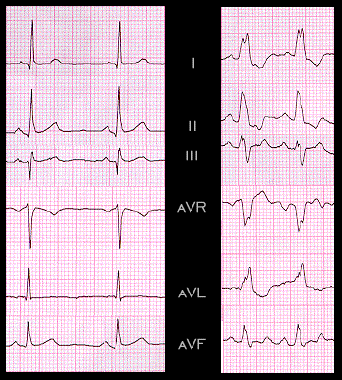
The limb leads shown here were taken on the same patient before and after the development of left bundle branch block. The QRS complex is prolonged by 60 msec from approximately 90 msec on the left, the normal tracing, to approximatgly 150 msec on the right, the tracing showing left bundle branch block. Note also the loss of the early forces with the onset of the left bundle branch block indicating the loss of normal septal activation, and the secondary ST segment and T wave changes. The frontal plane axis is not significantly changed.
